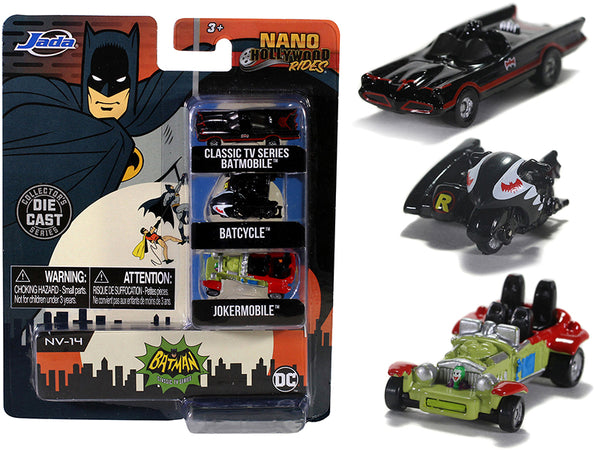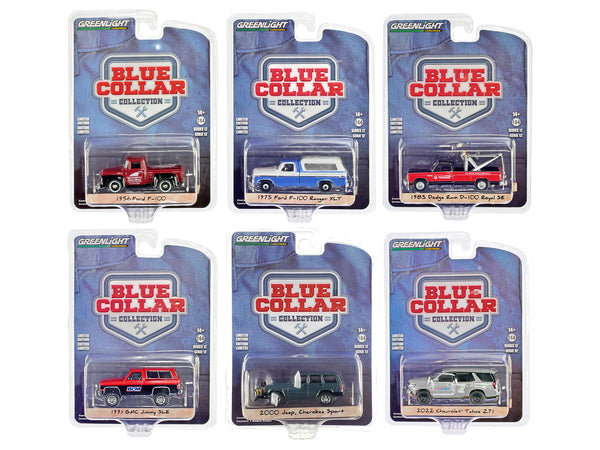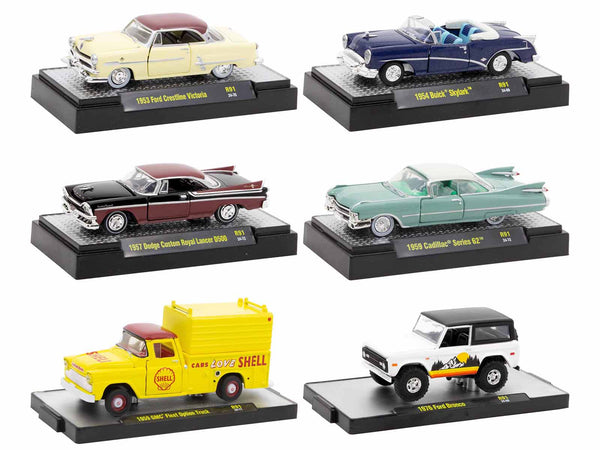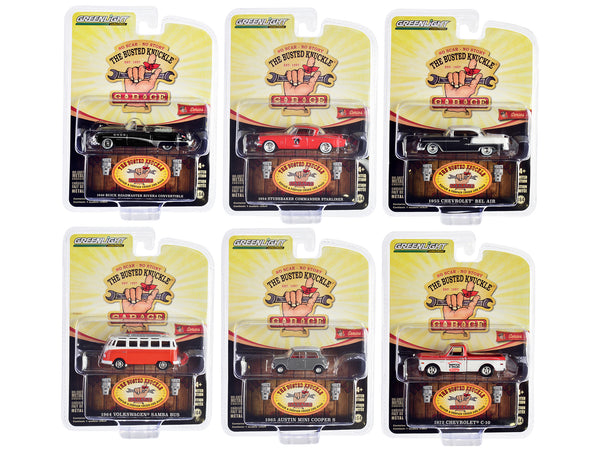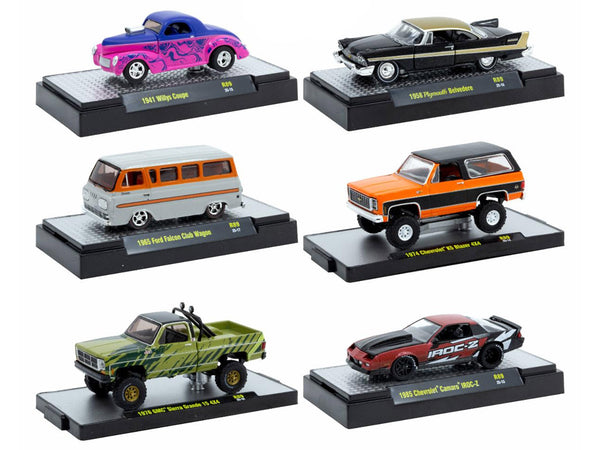
Corvette Gone Wild – Meet the Fastest Factory Corvette Ever Built
Related Products
Share
The Reign of Speed: Meet America's Fastest Factory Corvette

The fastest factory Corvette ever created has officially arrived, and it's rewriting the American performance car rulebook. The 2025 Chevrolet Corvette ZR1 has thundered into the history books with a jaw-dropping verified top speed of 233 mph. This isn't just another fast Corvette – it's a mid-engine masterpiece releasing an earth-shaking 1,064 horsepower from its twin-turbocharged 5.5L LT7 V8 engine.
| Fastest Factory Corvettes | Top Speed | Horsepower | 0-60 mph | Quarter-Mile |
|---|---|---|---|---|
| 2025 C8 ZR1 | 233 mph | 1,064 hp | 2.3 sec | 9.6 sec @ 150 mph |
| 2019 C7 ZR1 | 212 mph | 755 hp | 2.85 sec | 10.6 sec |
| 2024 E-Ray | 180 mph | 655 hp | 2.5 sec | 10.5 sec |
| 2023 C8 Z06 | 195 mph | 670 hp | 2.6 sec | 10.6 sec |
| 2009 C6 ZR1 | 205 mph | 638 hp | 3.4 sec | 11.3 sec |
Picture this: GM President Mark Reuss behind the wheel at Germany's Papenburg test track in October 2023. The roar of the engine. The blur of the scenery. This wasn't just another day at the office – this was the moment an American-made production car would shatter expectations and set a new benchmark for domestic speed.
After his record-setting run, Reuss couldn't contain his excitement: "Setting the top-speed record in the Corvette ZR1 is a true triumph for Corvette and for Chevrolet, and also an exhilarating, surreal experience for me personally."
The 2025 ZR1 represents the culmination of 70 years of Corvette evolution. When Chevy made the bold move to a mid-engine layout with the C8 generation in 2020, they weren't just changing the car's appearance – they were setting the stage for something truly extraordinary. This architecture provided the perfect foundation for engineers to create a twin-turbocharged beast generating an astonishing 828 lb-ft of torque and more than 1,200 pounds of downforce when pushing the limits of speed.
What makes this achievement even more remarkable? The record wasn't set with special tires or race fuel. The fastest factory Corvette achieved its 233 mph benchmark using completely standard equipment – production Michelin Pilot Sport 4S tires, the same aluminum wheels you'd get at the dealership, and regular 93-octane pump gas you can find at any station.
This wasn't a one-off fluke, either. Five different engineers took the wheel across multiple development cars, and all consistently exceeded 230 mph during testing. That's not just fast – that's repeatable, engineered performance you can count on.
The ZR1's verified 233 mph top speed leaves the previous title holder – the 2019 C7 ZR1 with its 212 mph maximum – in the dust. We're not talking about a small incremental improvement here; this is a monumental 21 mph leap forward that demonstrates just how far American performance engineering has come.

5. 1969 Corvette ZL1 – The Aluminum Pioneer
Let's take a trip back in time before diving deeper into modern speed machines. The 1969 Corvette ZL1 was the original blueprint for what would become Chevy's pursuit of the fastest factory Corvette title – and its approach was brilliantly simple: make it lighter, make it faster.
At the heart of this rare beauty sat an engineering marvel – an all-aluminum 427 cubic-inch big-block V8. While officially rated at a modest 430 horsepower (a number Chevrolet deliberately underreported to keep insurance companies from raising eyebrows), this aluminum powerhouse weighed about the same as the much smaller small-block 327 engines of the era. Talk about having your cake and eating it too!
How rare was the ZL1? Only two production models ever left the factory, making them among the most valuable Corvettes ever built. These unicorns could blast through the quarter-mile in about 11.5 seconds – a time that would embarrass many sports cars even decades later.

The ZL1's genius wasn't just throwing more power at the problem – it was the lightweight strategy that set a precedent Corvette engineers would follow for generations. By shedding pounds rather than just adding horses, the ZL1 achieved a power-to-weight ratio that made it the supercar of its day.
What's particularly fascinating is that this technological wonder wasn't born in a vacuum. The ZL1 engine program originally roared to life for Can-Am racing, but Chevrolet's willingness to bring this track technology to the street – even in extremely limited numbers – showed their commitment to performance that continues today.
The aluminum pioneer didn't just set quarter-mile records; it established Corvette's racing pedigree and demonstrated that American engineering could compete with the best in the world. Those lightweight lessons and racing-derived technologies would influence every fastest factory Corvette that followed, setting the stage for the speed demons we'll explore next.
4. 2009 Corvette C6 ZR1 – Boostr Revolution
The automotive world wasn't quite ready when Chevrolet unveiled the 2009 C6 ZR1. After a 14-year hiatus, the legendary ZR1 badge returned—and this time, it meant business. This wasn't just another Corvette with a bigger engine; it was America's first true supercar that could go toe-to-toe with exotic European machines costing three times as much.
What made this Corvette special was hiding under its bulging hood: the magnificent LS9 engine. This 6.2-liter boostd V8 produced a then-astonishing 638 horsepower and 604 lb-ft of torque—numbers that seem almost quaint by today's standards but were absolutely earth-shattering in 2009.
"The C6 ZR1 completely rewrote what was possible in an American sports car," says veteran automotive journalist Mark Patterson. "When that LS9 hit full boost, it transformed from impressive to absolutely supernatural."
The fastest factory Corvette of its era didn't just talk the talk—it walked the walk. With a verified top speed of 205 mph, the C6 ZR1 was the first production Corvette to breach the 200-mph barrier. Its 0-60 time of 3.4 seconds and quarter-mile run of 11.3 seconds put it in rarefied air, especially considering its relatively affordable price tag compared to Italian exotics.
But raw speed wasn't the whole story. The C6 ZR1 brought genuine innovation to the Corvette lineup with carbon-ceramic brakes that provided fade-free stopping power lap after lap. Its Magnetic Selective Ride Control suspension could transform from comfortable cruiser to track monster at the push of a button, and its liberal use of carbon fiber kept weight down while maintaining the car's structural integrity.
Perhaps most impressively, the ZR1 proved its worth on the world's most demanding racetrack, posting a blistering 7:26 lap time at the Nürburgring. That put it in the company of cars with names like Ferrari and Lamborghini—territory no Corvette had entered before.
What really set the C6 ZR1 apart was its unique visual identity. The clear polycarbonate "window" in the hood showcased the boostr housing, a subtle flex that told knowledgeable enthusiasts this wasn't just any Corvette. It was the king.
Despite its supercar credentials, the ZR1 remained refreshingly practical. Unlike many exotics that demand significant compromises, you could actually drive this 200-mph monster to work every day if you wanted to. It had a usable trunk, reasonable fuel economy (when driven sedately), and all the creature comforts expected in a premium vehicle.
The C6 ZR1 remains a pivotal chapter in the Corvette story—the moment when America served notice to the world that the fastest factory Corvette could compete with anything on four wheels, regardless of price or pedigree.
3. 2019 Corvette C7 ZR1 – The 755-hp Sledgehammer
The 2019 C7 ZR1 wasn't just the swan song for the front-engine Corvette era—it was a thunderous, tire-shredding farewell tour. Chevrolet engineers took everything they'd learned over decades of front-engine development and created what many consider the ultimate expression of the traditional Corvette formula.
At its heart rumbled the boostd 6.2-liter LT5 V8, churning out a jaw-dropping 755 horsepower and 715 lb-ft of torque. This mechanical masterpiece could launch the ZR1 to 212 mph and blast through the quarter-mile in just 10.8 seconds. Those numbers weren't just impressive for a Corvette—they put this all-American beast in the company of exotic supercars costing three times as much.
"The 2019 ZR1 is the baddest Corvette on the road today," gushed Steven Rupp in Hot Rod Magazine. "With its insane power output, bleeding-edge aerodynamics, and aggressive looks, it represents the pinnacle of front-engine Corvette development."
But the C7 ZR1 wasn't just a straight-line missile. Chevrolet's engineers crafted a complete performance package capable of dominating both road and track. The optional ZTK Performance Package transformed the ZR1 into a downforce-generating monster, featuring the largest rear wing ever bolted to a production Chevy.

That massive wing wasn't just for show—it was derived directly from Corvette's successful C7.R racing program. Combined with an aggressive front splitter and other aerodynamic improvements, the ZR1 stuck to the pavement like it was magnetized.
Keeping all that power under control required serious cooling, and the ZR1 delivered with a remarkable 13 heat exchangers strategically placed throughout the car. The distinctive hood bulge and additional cooling vents weren't styling exercises—they were absolute necessities to feed and cool the hungry LT5 engine.
Drivers could choose between a seven-speed manual for those who preferred rowing their own gears or an eight-speed automatic for those chasing the absolute quickest acceleration times. Either way, the fastest factory Corvette of its generation delivered an intoxicating driving experience that few cars at any price could match.
What made the C7 ZR1 truly special was how it represented the absolute zenith of what was possible with the traditional front-engine Corvette layout. After seven generations of refinement, Chevrolet pushed this platform to its theoretical limits before moving to the mid-engine configuration with the C8.
The 2019 ZR1 wasn't just fast—it was a statement. It proved that American engineering could produce a world-class supercar capable of challenging the established European elite while maintaining the character and relative value that made the Corvette an icon. The fastest factory Corvette of the front-engine era set a performance bar so high that only its mid-engine successor could hope to clear it.
2. 2024 Corvette E-Ray – Lightning-Quick Hybrid Launches
The 2024 Corvette E-Ray isn't just another Corvette—it's a leap forward that rewrites the rules of American performance. As the first-ever electrified and all-wheel-drive production Corvette, the E-Ray might not claim the ultimate top speed crown (that belongs to the ZR1), but it earns its spot on this list through mind-bending acceleration and groundbreaking hybrid technology.
This technological marvel combines a traditional 6.2-liter LT2 V8 pumping out 495 horsepower at the rear wheels with a 160-horsepower electric motor powering the front axle. Together, they deliver a combined 655 horsepower that launches this Corvette from 0-60 mph in just 2.5 seconds—making it the quickest-accelerating production Corvette until the 2025 ZR1 came along.
"The E-Ray's all-wheel-drive system is a game-changer," explains Andy Stonehouse, automotive journalist. "I credit it with helping to put all that power to the pavement, resulting in launch capabilities that were previously impossible in a Corvette."
The E-Ray demolishes the quarter-mile in just 10.5 seconds—a time that would have seemed like science fiction for a factory Corvette not too long ago. While its 180 mph top speed doesn't set records, the E-Ray's real magic lies in its everyday usability and all-weather capability.

Unlike traditional Corvettes that become garage queens at the first sign of rain, the E-Ray's electrified front axle provides genuine four-season capability. Slippery roads? No problem. Light snow? The E-Ray handles it with confidence. This isn't just a fair-weather supercar—it's an everyday performance machine you can actually live with.
The E-Ray offers multiple personality modes, including a whisper-quiet Stealth mode that allows for all-electric operation at speeds up to 45 mph for short distances. Perfect for those early morning departures when you don't want to wake the neighbors with V8 thunder.
One of the E-Ray's clever features is its regenerative braking system, which not only improves efficiency but also recharges the battery during spirited driving. This means the fastest factory Corvette hybrid maintains consistent performance even during extended track sessions—no performance degradation as the battery depletes.
Visually, the E-Ray shares the aggressive widebody stance of the Z06 but adds its own distinctive wheels and subtle badging. It doesn't scream "I'm a hybrid!" through exaggerated styling—it lets its performance do the talking instead.
What makes the E-Ray truly special is how it broadens the Corvette's appeal beyond traditional sports car buyers. The instant torque from the electric motor perfectly complements the high-revving V8, creating a driving experience that's both familiar and entirely new. It's not just a track toy but a technological showcase that points toward Corvette's electrified future while honoring its performance heritage.
For more information about the latest in performance car innovations like the E-Ray, check out More info about Supercar News.
1. 2025 Corvette C8 ZR1 – The Fastest Factory Corvette
If Corvettes were superheroes, the 2025 C8 ZR1 would be wearing the cape and saving the day. This isn't just another fast car – it's the fastest factory Corvette ever created, and it's rewriting the American performance playbook with every mile.
With a jaw-dropping verified top speed of 233 mph, the ZR1 isn't just the quickest Corvette; it's the fastest production vehicle ever built by an American automaker. Period.
At its heart beats the mighty LT7 – a 5.5-liter twin-turbocharged flat-plane crank V8 that produces a mind-bending 1,064 horsepower and 828 lb-ft of torque. To put that in perspective, this is the most powerful production V8 engine ever created in America. Let that sink in for a moment.
"The team that revolutionized Corvette with a mid-engine architecture took on another challenge: take ZR1 to the next level," said Scott Bell, Vice President of Chevrolet. "Corvette ZR1 is about pushing the envelope with raw power and cutting-edge innovation."
The performance numbers read like a wish list from the most optimistic Corvette fan: 0-60 mph in a blistering 2.3 seconds with the ZTK package, quarter-mile times of 9.6 seconds at 150 mph, and that stratospheric top speed that puts many purpose-built race cars to shame. Perhaps most impressive is its ability to accelerate from 80 to 200 mph and back to 80 mph in just 24.5 seconds – that's 22% quicker than the C7 ZR1 and a whopping 53% faster than the C6 ZR1.

What makes these achievements even more remarkable is their real-world attainability. This isn't some finicky supercar that needs special fuel and perfect conditions. The ZR1 achieved these feats on regular 93-octane pump gas, with factory Michelin Pilot Sport 4S tires, on normal surfaces. It's not a one-hit wonder – it's repeatable performance from a production car you can actually buy and drive.
The ZR1's carbon fiber aerodynamic package is engineering artistry, generating over 1,200 pounds of downforce at top speed. For the track enthusiasts, the available ZTK Performance Package adds even more aero elements, optimizing the car for circuit performance while still enabling those record-setting velocities.
For those days when you're feeling particularly brave, the ZR1 features a dedicated "Top Speed Mode" that fine-tunes the car's systems specifically for maximum velocity on closed courses. This mode, paired with the car's sophisticated aerodynamics and monstrous engine, allowed GM President Mark Reuss to achieve the 233 mph record at Germany's Papenburg test track.
"As we worked to develop this car, we continued to leap past expectations, and we knew we had a special Corvette on our hands," said Tadge Juechter, Executive Chief Engineer for Corvette. Engineers reported that the ZR1 blew past their initial top speed target of 220 mph on its very first attempt – a testament to how thoroughly they'd nailed the design.
The 2025 ZR1 represents the culmination of Corvette's 70-year journey from America's sports car to a world-beating supercar capable of challenging vehicles with seven-figure price tags. The fastest factory Corvette isn't just keeping up with exotic European brands – it's setting the pace that others must follow.
Top Speed & Acceleration – fastest factory corvette proven
The 2025 Corvette ZR1's crown as the fastest factory Corvette isn't based on marketing hype or theoretical calculations – it's backed by rigorous real-world testing and verified performance data. Chevrolet engineers put this beast through its paces at multiple venues, including the Milford Proving Ground, Nürburgring, Road Atlanta, and Virginia International Raceway.
That headline-grabbing 233 mph top speed wasn't achieved in some perfect laboratory setting with special tweaks. It happened in the real world at Germany's Papenburg high-speed oval. What's truly impressive is how consistently the car performs – five different engineers in both development cars exceeded 230 mph across multiple runs. This wasn't a fluke; it's what the car was built to do.
"Going into the banking was the most intense part," recalled Chris Barber, a Corvette development engineer. "That feeling is unlike anything I've ever experienced." Picture this: Papenburg's track features banking of nearly 50 degrees – steep enough to counteract g-forces up to a point, but once you're pushing past 200 mph, you're in territory few humans ever experience.
The ZR1's acceleration figures are equally astonishing. Its 0-60 mph time of 2.3 seconds puts it in the company of hypercars with price tags that would make your eyes water. The quarter-mile time of 9.6 seconds at 150 mph makes it the first factory Corvette to break the 10-second barrier – a threshold that seemed like fantasy just a few years ago.
| Performance Metric | 2019 C7 ZR1 | 2025 C8 ZR1 | Improvement |
|---|---|---|---|
| Horsepower | 755 hp | 1,064 hp | +309 hp |
| Torque | 715 lb-ft | 828 lb-ft | +113 lb-ft |
| Top Speed | 212 mph | 233 mph | +21 mph |
| 0-60 mph | 2.85 sec | 2.3 sec | -0.55 sec |
| Quarter-Mile | 10.6 sec | 9.6 sec | -1.0 sec |
| 80-200-80 mph | 31.4 sec | 24.5 sec | -6.9 sec |
Perhaps the most telling performance metric is the 80-200-80 mph test, which measures not just raw acceleration but also braking capability. The ZR1 completes this test in just 24.5 seconds – that's nearly 7 seconds quicker than the previous-generation ZR1. This dramatic improvement showcases the advantages of the mid-engine layout and the advanced engineering throughout the car's systems.
The ZR1's "Top Speed Mode" is a specialized calibration that adjusts everything from the electronic limited-slip differential to the Magnetic Ride Control dampers, ensuring stability and control even when you're traveling faster than most small aircraft. It's like having a racing engineer fine-tune your car at the push of a button.
These achievements cement the 2025 ZR1's position as not just the fastest factory Corvette but one of the fastest production cars on the planet, regardless of price. It's American engineering excellence in its purest form.
Engine & Drivetrain Tech – fastest factory corvette engineering
The beating heart of the fastest factory Corvette is its LT7 engine – a 5.5-liter twin-turbocharged DOHC flat-plane crank V8 that represents American engineering at its absolute finest. This powerplant is part of what Chevrolet calls the "Gemini V8 architecture," designed from the ground up to excel in both naturally aspirated and twin-turbo applications.
The flat-plane crankshaft design, which first appeared in the naturally aspirated Z06, allows this engine to rev higher and respond more quickly than traditional cross-plane V8s. This configuration is typically found in exotic European sports cars and gives the ZR1 a distinctive, high-pitched exhaust note that sounds like nothing else on American roads.
Those twin turbochargers aren't just bolted on as an afterthought – they're integrated directly into the exhaust manifolds, minimizing lag and maximizing response. The system pushes up to 24 psi of boost, helping to produce the engine's massive 1,064 horsepower and 828 lb-ft of torque. To handle the extreme heat, the turbines use nickel-based MAR material that can withstand temperatures up to 1,900°F – hot enough to melt aluminum.
"This element provides function, but we were able to integrate passionate design into the form and do it in a way that paid homage to Corvette's history," explained Phil Zak, Executive Design Director for Chevrolet, referring to the engine's visible components through the ZR1's unique split rear window.

Peek under the hood and you'll find technology that would make race engineers smile: titanium connecting rods that combine strength with reduced weight, forged aluminum pistons with unique bowl designs specifically engineered for the twin-turbo application, and a dry-sump lubrication system ensuring consistent oil pressure during high-g cornering. The intelligent anti-lag calibration improves throttle response under boost, while the four exhaust pipes collectively generate 37 pounds of forward thrust – literally pushing the car faster through exhaust pressure alone.
All this power reaches the rear wheels through an improved version of the Corvette's 8-speed dual-clutch transmission (DCT), specially calibrated to handle the LT7's mountain of torque. The transmission features unique clutch materials and improved cooling to ensure reliability even when you're pushing the car to its limits lap after lap.
The ZR1's carbon fiber aero package isn't just for looks – it creates over 1,200 pounds of downforce at top speed. The package includes a flow-through hood directing air through the engine compartment, side brake-cooling ducts, fresh air intake ducts, and a fixed rear wing with gurney flap as standard. For those who want even more track capability, the optional ZTK high-downforce package adds a larger front splitter and adjustable wickerbill.
The chassis features Magnetic Ride Control 4.0 dampers that can adjust damping rates in milliseconds – faster than you can blink – providing both exceptional handling and a comfortable ride when you're just cruising. The ZR1 also sports the largest brakes ever fitted to a Corvette: massive 15.7-inch front and 15.4-inch rear carbon-ceramic rotors with six-piston front and four-piston rear calipers that can haul this missile down from ludicrous speeds with confidence.
What makes all this technology truly remarkable is that it comes in a production car with full warranty coverage, not some limited-run special built for millionaires. The fastest factory Corvette represents performance democratized – world-beating speed and capability at a fraction of the price of its exotic competitors.
Frequently Asked Questions about the Fastest Factory Corvette
What is the top speed of the 2025 ZR1?
The 2025 Chevrolet Corvette ZR1 has truly earned its crown as the fastest factory Corvette with a verified top speed of 233 mph. This isn't just a marketing claim—it's a documented achievement that happened at Germany's Papenburg high-speed oval with none other than GM President Mark Reuss at the wheel.
What makes this speed even more impressive is how it was achieved. This wasn't some stripped-down, specially prepared one-off. The record-setting car used standard production components—the same Michelin Pilot Sport 4S tires and aluminum wheels that customers will get. It ran on regular 93-octane pump gas you'd find at any gas station. And to prove it wasn't a fluke, five different engineers took both development cars beyond 230 mph in multiple runs. That's consistency you can believe in.
Why is the 2025 ZR1 called the fastest factory corvette instead of a modified build?
There's a world of difference between factory performance and aftermarket modifications, which is why the 2025 ZR1's title as the fastest factory Corvette matters so much. When you buy a ZR1 from your Chevy dealer, you're getting exactly the same car that hit that 233 mph mark—not a special version with one-off parts or modifications.
Unlike aftermarket builds that might sacrifice reliability, safety, or emissions compliance for speed, the ZR1 delivers its mind-blowing performance while still meeting all federal regulations. It comes with a full factory warranty. It passes every safety test. It won't fail an emissions check. It's a car you can actually live with, not just a weekend toy that needs constant attention.
For the record-keepers at Guinness World Records, a production car needs at least 30 identical units built to qualify. The 2025 ZR1 will sail past that number as a regular production model available to anyone with the means to purchase one. This isn't some limited-edition unicorn—it's a real Corvette you can actually buy.
Are any other Corvettes close to the ZR1's quarter-mile time?
While the 2025 ZR1's 9.6-second quarter-mile time at 150 mph sets a new benchmark that no other factory Corvette has broken, a few models come impressively close to the king:
The 2024 Corvette E-Ray, with its clever hybrid all-wheel-drive system, rockets through the quarter-mile in just 10.5 seconds. That hybrid setup gives it launch capabilities that have to be felt to be believed, even with "only" 655 combined horsepower.
Right behind it, the naturally-aspirated 2023 Z06 and the boosted 2019 C7 ZR1 both clock in at 10.6 seconds. It's particularly impressive that the Z06 manages this time with its 670-horsepower naturally aspirated engine, matching the previous-generation ZR1 that had 85 more horsepower from its boosted V8.
What truly separates the 2025 ZR1 from the pack isn't just breaking into the 9-second range—it's the trap speed. Crossing the quarter-mile at 150 mph (or an even more blistering 152 mph with the standard aero package) demonstrates the raw power advantage the ZR1 holds. That trap speed tells the real story of the car's incredible power-to-weight ratio and aerodynamic efficiency.
The mid-engine layout introduced with the C8 generation deserves some credit too. By moving the engine behind the driver, Chevrolet created a platform with superior weight distribution and traction that helps all modern Corvettes put their power down more effectively than their front-engine ancestors ever could.
For more fascinating insights about the latest supercars including the fastest factory Corvette, check out our Supercar News section, where we cover everything from record-breaking runs to the latest technological innovations.
Conclusion
The evolution of the fastest factory Corvette tells a story that goes well beyond the pursuit of speed records. It's a chronicle of American engineering excellence and Chevrolet's unwavering commitment to delivering supercar performance without the supercar price tag.
From the pioneering aluminum-block ZL1 of 1969 to the mind-bending twin-turbo ZR1 of 2025, each breakthrough Corvette has pushed what seemed possible from a production American sports car. The journey has been nothing short of remarkable.
The 2025 Corvette ZR1's verified 233 mph top speed isn't just another statistic to brag about. It's a declaration that American performance engineering can not only compete with the best from Europe and Asia but can actually surpass them—at a fraction of the cost of comparable exotic hypercars.
"With the current generation's switch to mid-engine, we knew the outstanding performance and balance made this a real possibility," Mark Reuss shared after his record-setting run. "To go over there and get it done is a testament to the power of ZR1, and to the incredibly talented team that developed and built it."
As we stand at this impressive milestone in Corvette history, it's worth reflecting on how far we've come. The ZR1 represents perhaps the ultimate expression of internal combustion performance—a fitting high note in Corvette's seven-decade symphony of speed and innovation.
Yet the story doesn't end here. Models like the hybrid E-Ray show that Chevrolet is already embracing the future, finding clever ways to incorporate new technologies while keeping the Corvette's thrilling performance DNA intact. The fastest Corvette of tomorrow might not even use gasoline, but you can bet it will still be unmistakably a Corvette.
Here at Rapid Vehicles, we share that passion for automotive excellence and the incredible engineering that makes cars like the ZR1 possible. We understand the thrill of driving something special, whether it's America's fastest sports car or your personalized pride and joy.
Whether you're looking to improve your own vehicle's performance or simply appreciate the technical brilliance behind the fastest factory Corvette, we invite you to explore our selection of high-quality automotive parts and accessories. Our team of enthusiasts is ready to help you find exactly what you need.
The Corvette's journey from America's sports car to world-beating supercar is far from over. The 2025 ZR1 may currently wear the crown as the fastest factory Corvette, but history suggests it won't be the last to claim that title. Whatever comes next, we'll be watching with excitement—and we hope you'll join us for the ride.
